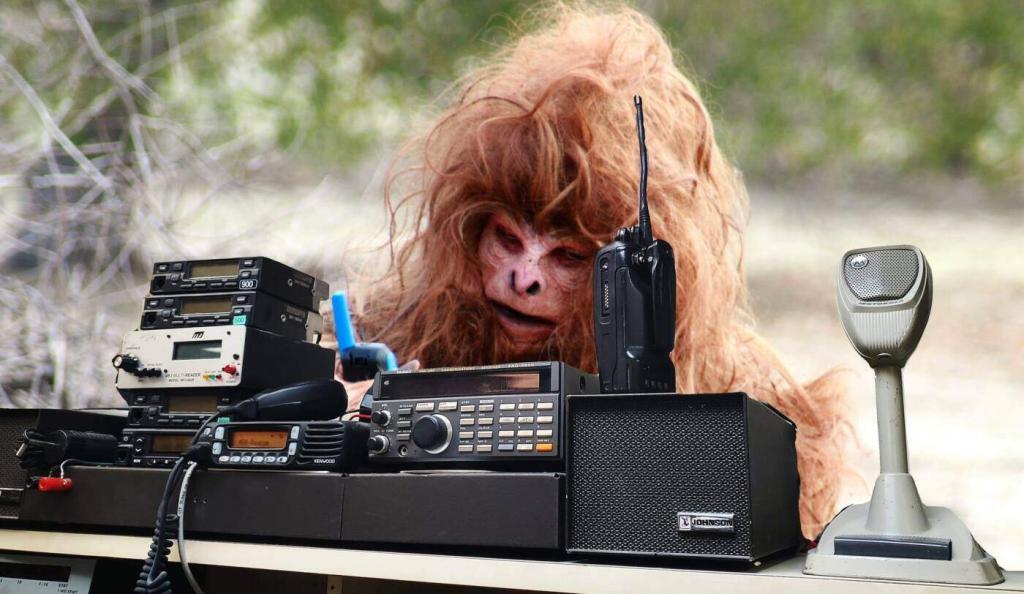 In the realm of post-apocalyptic or supernatural TV shows like ‘Walking Dead’, ‘Z Nation’, and ‘Stranger Things’, the characters often stumble upon a seemingly magical device that can connect them to their group or even to the outside world: a radio. However, as delightful as these scenarios might seem, they are often riddled with inaccuracies when it comes to radio intercompatibility and usage. Let’s take a humorous yet informative look at some of these erroneous portrayals and debunk them like the myth-busting heroes we are!
In the realm of post-apocalyptic or supernatural TV shows like ‘Walking Dead’, ‘Z Nation’, and ‘Stranger Things’, the characters often stumble upon a seemingly magical device that can connect them to their group or even to the outside world: a radio. However, as delightful as these scenarios might seem, they are often riddled with inaccuracies when it comes to radio intercompatibility and usage. Let’s take a humorous yet informative look at some of these erroneous portrayals and debunk them like the myth-busting heroes we are!
-
Ignoring the Band and Frequency:
One of the most common mistakes is characters finding a radio and effortlessly communicating with others in their group, regardless of the band or frequency they’re using. Real-world radios operate on specific bands and frequencies, such as Very High Frequency (VHF) or Ultra High Frequency (UHF). These bands are allocated for different purposes, such as amateur radio, public service, or commercial use, and have dedicated frequencies within them.
Example: Imagine Rick Grimes finding a walkie-talkie from a police officer, then effortlessly tuning it to communicate with his group without even considering the band or frequency. In reality, he would more likely end up chatting with a bunch of amateur ham radio enthusiasts discussing their homemade antennas.
-
Mystery Power Sources:
Another amusing oversight is characters powering a tube radio on a hill with no evident power source in sight. We all know that radios require electricity to function, and while battery-powered radios exist, they need a finite power supply. Vaccum tube radios require consA radio with an infinite power source is as fictional as the supernatural elements in these shows.
Example: Picture Dustin from ‘Stranger Things’ sitting on a hill, tuning his radio to contact his friends, despite not having any batteries or electrical outlets nearby. You can see the vacuum tubes glowing in the back of the radio. Perhaps he’s tapping into the Upside Down for an infinite power supply!
-
Infinite Range Delusion:
Characters in these shows often possess radios with seemingly infinite range, effortlessly connecting them to people miles away. In reality, the range of radios depends on various factors such as antenna height, terrain, interference, and the power output of the radio itself. Transmitting over long distances usually requires repeaters or satellite communication, which are rarely depicted in these shows.
Example: In ‘Z Nation’, the group stumbles upon a radio and uses it to communicate with a distant settlement without any external support, despite being surrounded by hordes of zombies. Maybe the undead are secretly working as radio repeaters?
-
Random Radios and Frequency Confusion:
Using a random radio to find the frequency your group is on might sound simple in these shows, but in reality, it’s much more challenging. Imagine trying to find your friends’ radio frequency in the vast sea of radio bands and frequencies. It’s like trying to find a needle in a haystack, blindfolded!
Example: If Daryl Dixon from ‘Walking Dead’ attempts to find his group’s frequency by merely turning the dial on a scavenged radio, he might end up catching snippets of walkie-talkie conversations from the Terminus, Negan, or even the The Whisperers. Well, maybe not the Whisperers.
Conclusion:
While shows like ‘Walking Dead’, ‘Z Nation’, and ‘Stranger Things’ provide thrilling entertainment, their portrayal of radio inter-compatibility often leaves much to be desired. The reality of radio usage, with its specific bands, frequencies, finite power sources, and limited range, might not be as exciting, but it’s essential to separate fact from fiction. So, the next time you watch these shows and see a character effortlessly using a radio, remember the humorous inconsistencies and embrace the myth-busting spirit!
Here are examples of common two-way radio bands and their frequencies:
- Citizens Band (CB):
- Frequency Range: 26.965-27.405 MHz (40 Channels)
- Example Channel: Channel 19 – 27.185 MHz (Used for highway communication)
- General Mobile Radio Service (GMRS):
- Frequency Range: 462.550-467.725 MHz (22 Channels)
- Example Channel: Channel 7 – 462.675 MHz (Used for family communication)
- Police and Fire:
- Frequency Range: Varies by location and agency
- Frequencies in VHF low, VHF high, UHF, 700MHz, 800MHz.
- 6M (Amateur Radio Band):
- Frequency Range: 50-54 MHz
- Example Frequency: 50.125 MHz (Used for voice communication among amateur radio operators)
- 2M (Amateur Radio Band):
- Frequency Range: 144-148 MHz
- Example Frequency: 146.520 MHz (National calling frequency for amateur radio operators)
- 70cm (Amateur Radio Band):
- Frequency Range: 420-450 MHz
- Example Frequency: 446.000 MHz (Used for repeater operations by amateur radio operators)
- Multi-Use Radio Service (MURS):
- Frequency Range: 151.820-154.600 MHz (5 Channels)
- Example Channel: Channel 4 – 154.570 MHz (Used for business and personal communication)
- Aircraft:
- Frequency Range: Varies by location and purpose
- Example Frequency: 123.450 MHz (Used for general aviation communications)
- Commercial Land Mobile Radio (LMR):
- Frequency Range: Varies by application and license
- Frequencies in VHF low, VHF high, UHF and 800MHz
There are many more than what is shown here.